Green roofs for biodiversity
— 09 May 2024
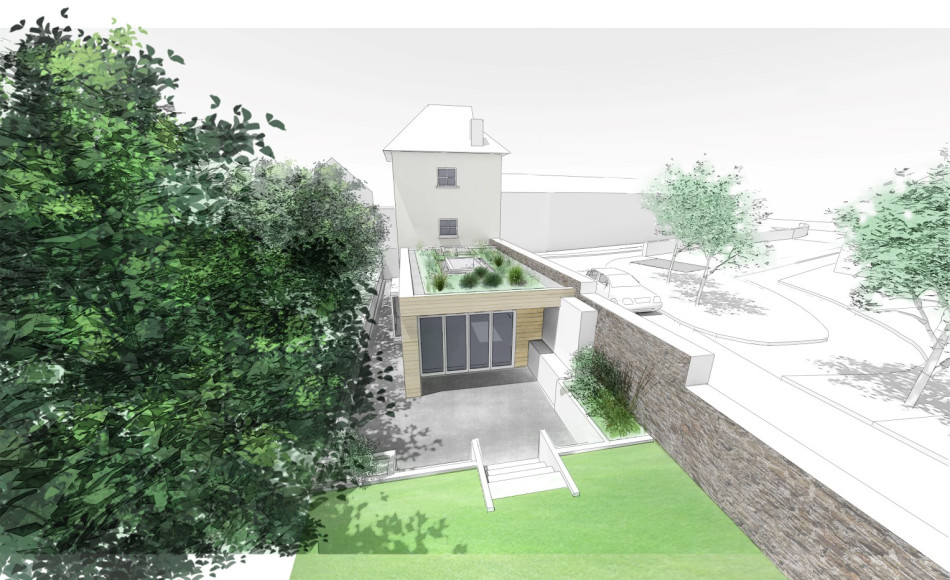
A green roof was designed for this extension to a grade II listed building in North Devon
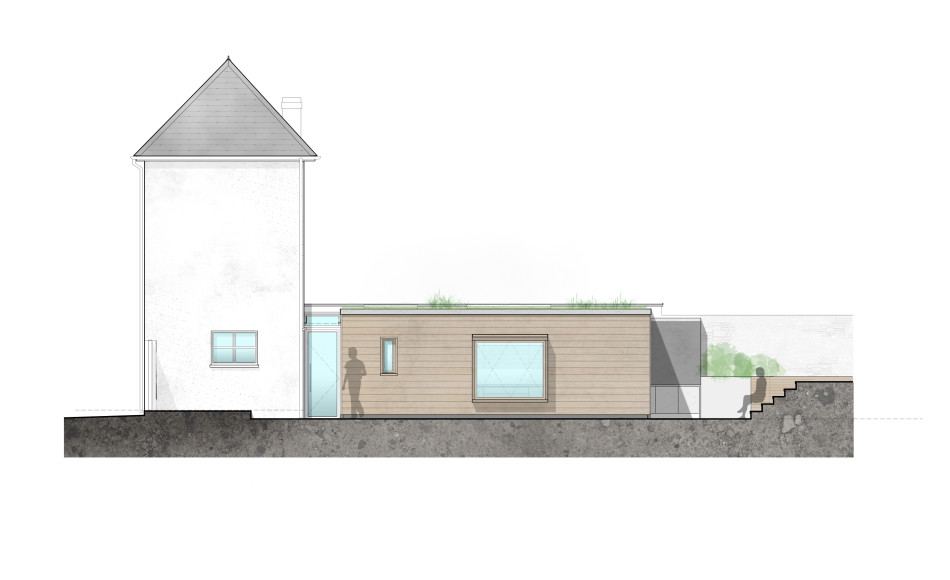
Visually softer impact from upper rooms with views down to new roof
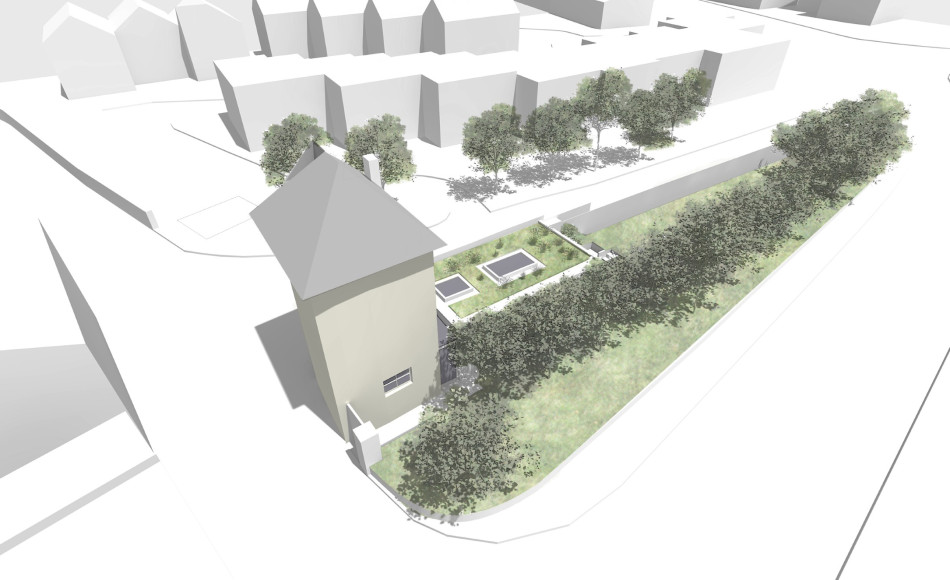
The green roof softens the extension and links the building to the garden
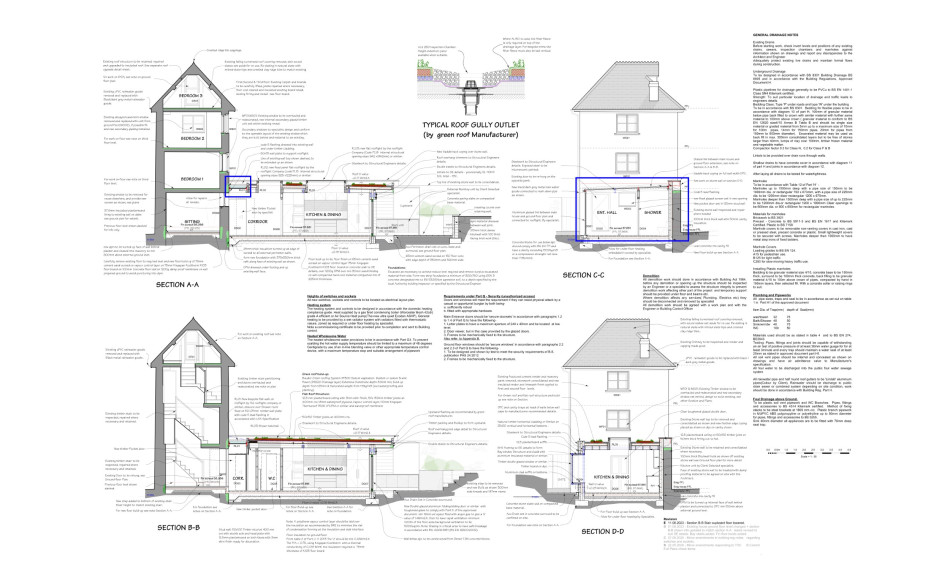
Plans for building regulations incorporating details of the green roof
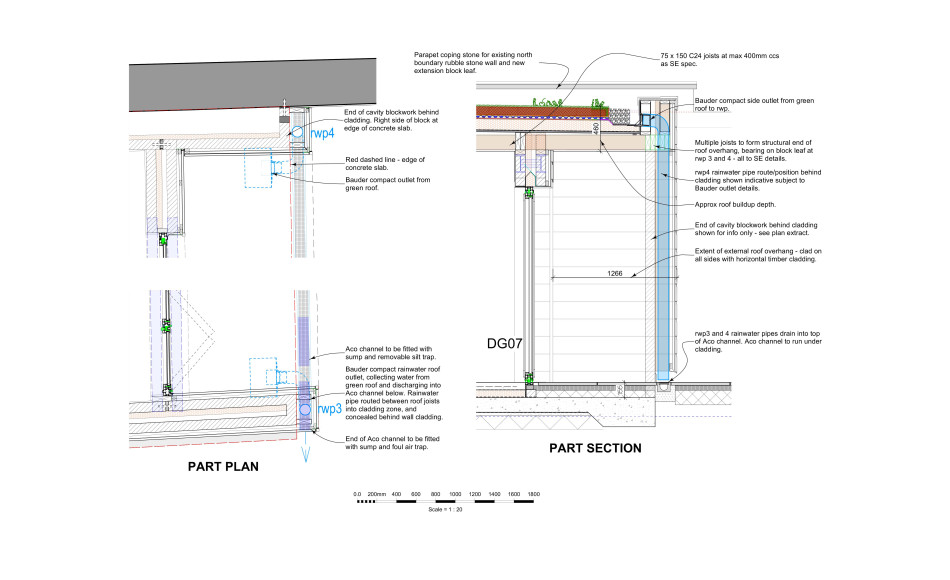
Detailed design for the green roof on the extension to grade II listed building
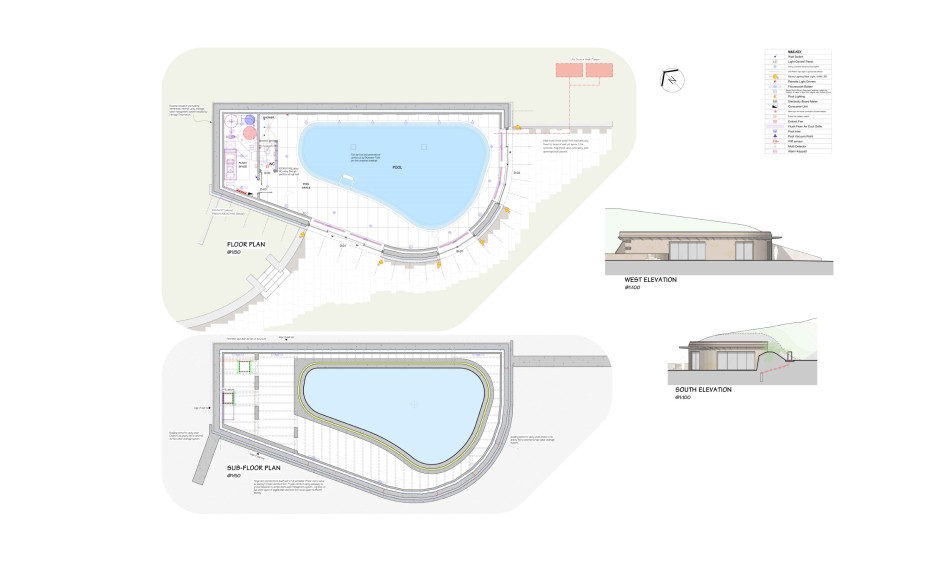
The pool house at this upgraded farmhouse was built into the hillside. The roof is an intensive green roof, which allows for deep rooted planting, and amenity landscape over the building.
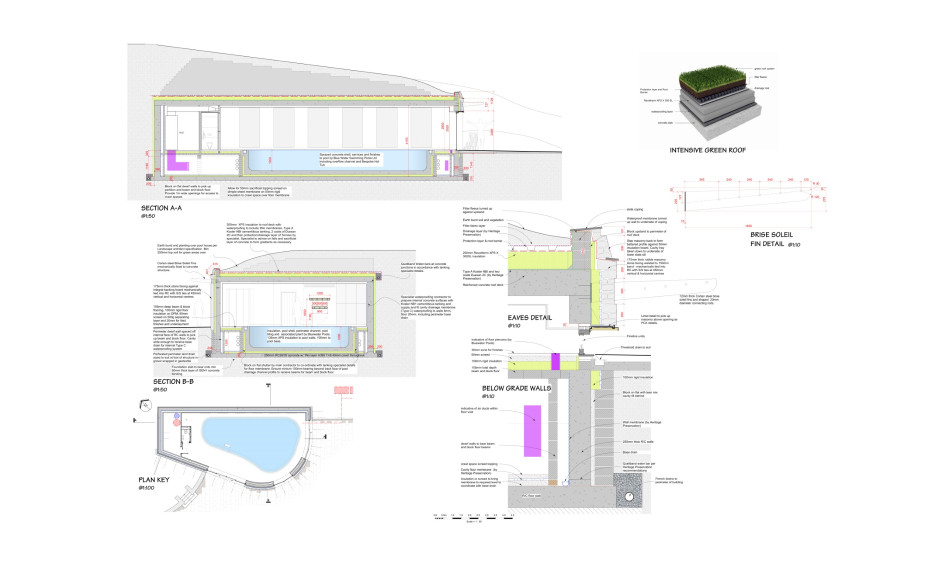
Technical designs
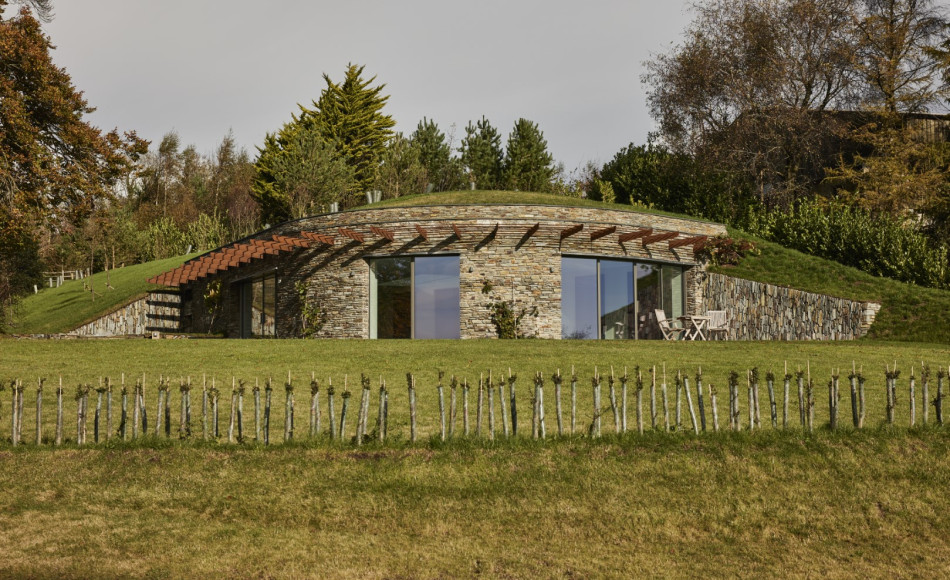
The green roof allows the pool to become part of the landscape
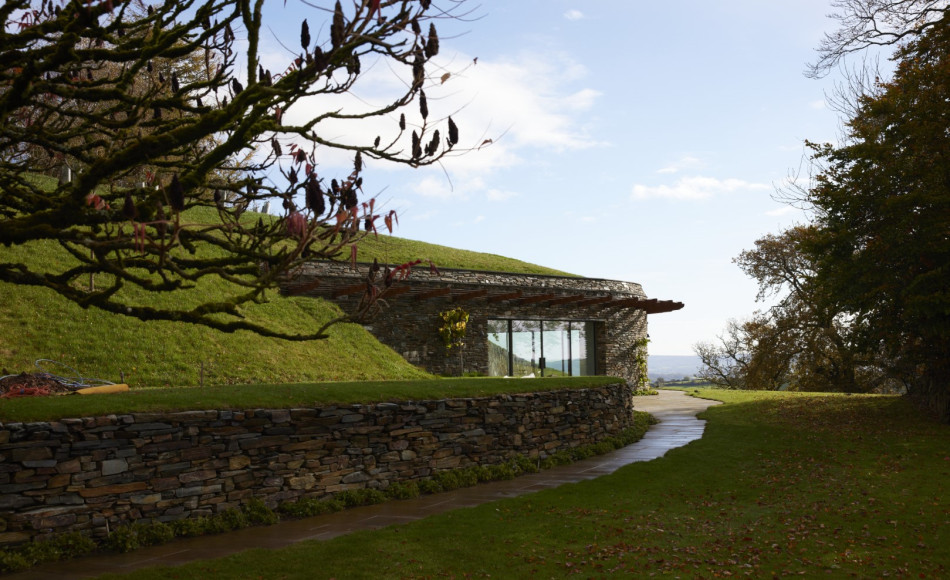
Unintentional green roof on church in Brixham
The roof has self-seeded helped by accumulated guano and other debris
Jonathan Rhind Architects are advising the church on ways forward, including installing a planned green roof
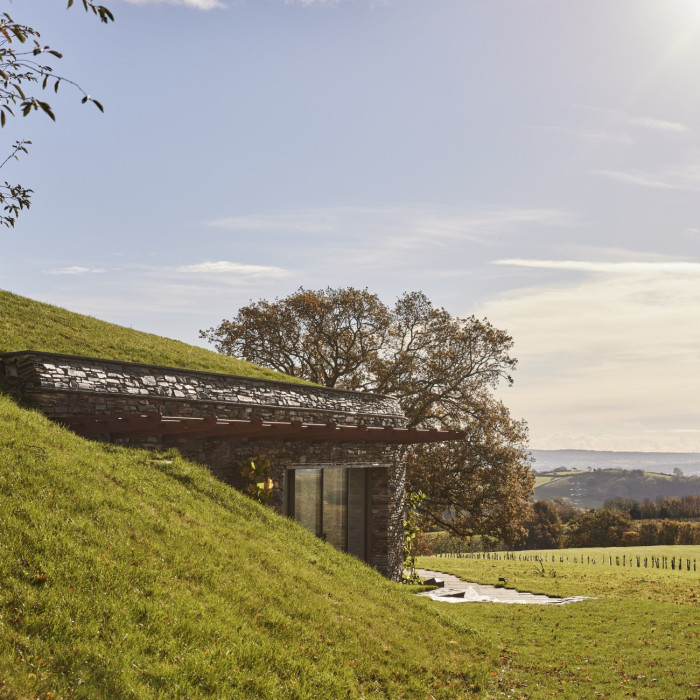
As well as the many other benefits, incorporating a green roof into a development project could help towards Biodiversity Net Gain (BNG) requirements introduced by the government earlier this year.
The benefits of a green roof are not only environmental, they can also improve well-being and a building’s performance.
Benefits of a living green roof include:
- Habitats and food source for insects
- Can contribute to green corridors connecting habitats for birds and bats
- Rainwater management – reduced run-off from roofs; attenuation of discharge to below ground drainage system
- Insulating – keep building warmer in winter and cooler in summer thereby reducing energy demands
- Improve sound insulation which in urban environments especially can be an advantage
- Provide protection to the fabric of the roof from environmental factors such as damaging UV rays thereby increasing its lifespan
- Natural appearance of flat roof when viewed from higher spaces, buildings, surroundings – can improve well-being and reduce visual impacts of built forms
- Improvements to air quality from more green living species
A green roof is built up of several layers including, waterproofing membrane, root barrier membrane, drainage layer, filter layer and growing medium. Green roofs although low maintenance will require some maintenance throughout the year.
Design points to consider when incorporating a living green roof in your design:
- Type – sedum, biodiverse, intensive
- Plant species – intensive planting with variety of native species – wildflower mixes / nectar-rich / berries
- Depth of substrate – influenced by planting choices
- Irrigation during dry spells – rainwater harvesting from more traditional roofs and rainwater goods to irrigate living green roof
- Maintenance – design of the roof structure to allow foot fall of regular maintenance access, implications of bird foraging and nesting on the roof, hostile salt air environments
- Just the roof? Would the scheme benefit from a green wall – planted framework – benefits of solar gain shading / privacy / living backdrops / incorporate bat/bird/bug boxes?
What is a brown roof?
These replicate the environment of a brown-field site on the roof of the development. A substrate similar to that found in the area is applied to the roof and is left to naturally seed. The roof will therefore be seeded with varieties that would have populated the area if left undeveloped.
Unintentional green roof at a Brixham church
The flat roof of at this church self-seeded to create an unintentional and unmanaged green roof from years of accumulated bird guano and nesting debris on top of a modern felt flat roof.
Jonathan Rhind Architects are currently advising the church on a replacement designed green living roof, to benefit from the positives of a living green roof, whilst minimising the negatives of blocked drainage gullies and heavy waterlogging. We are also investigating whether grants, available through the Church of England to enable churches to achieve net zero carbon by 2030, could be used to achieve this.